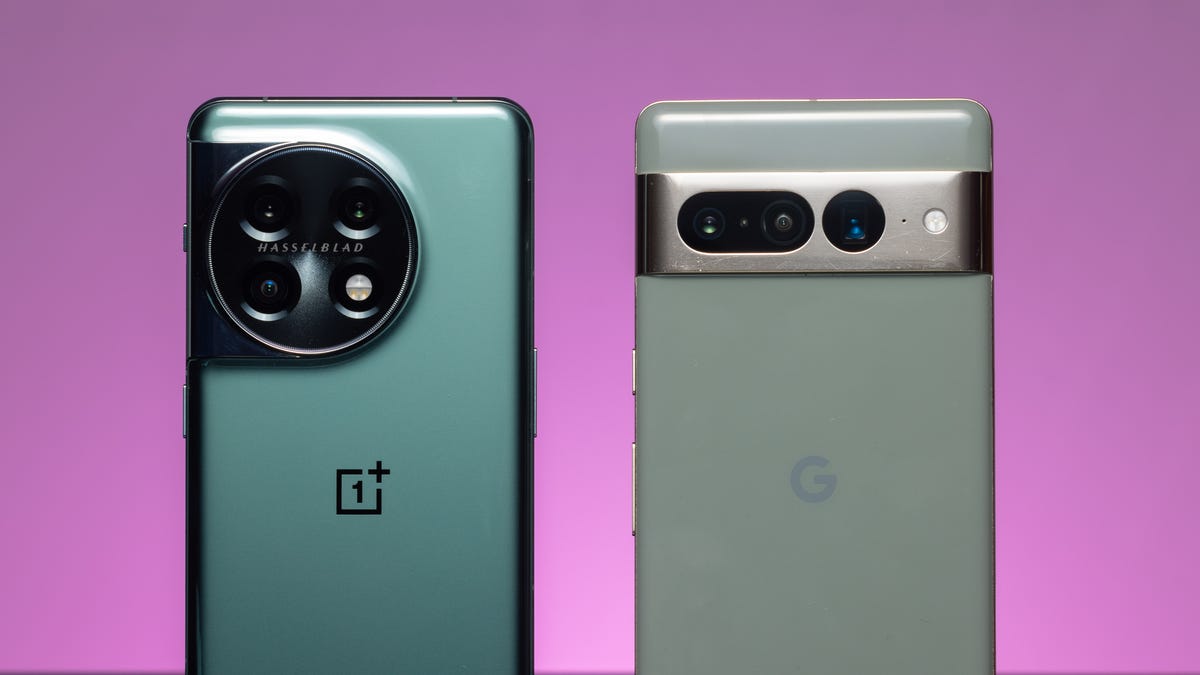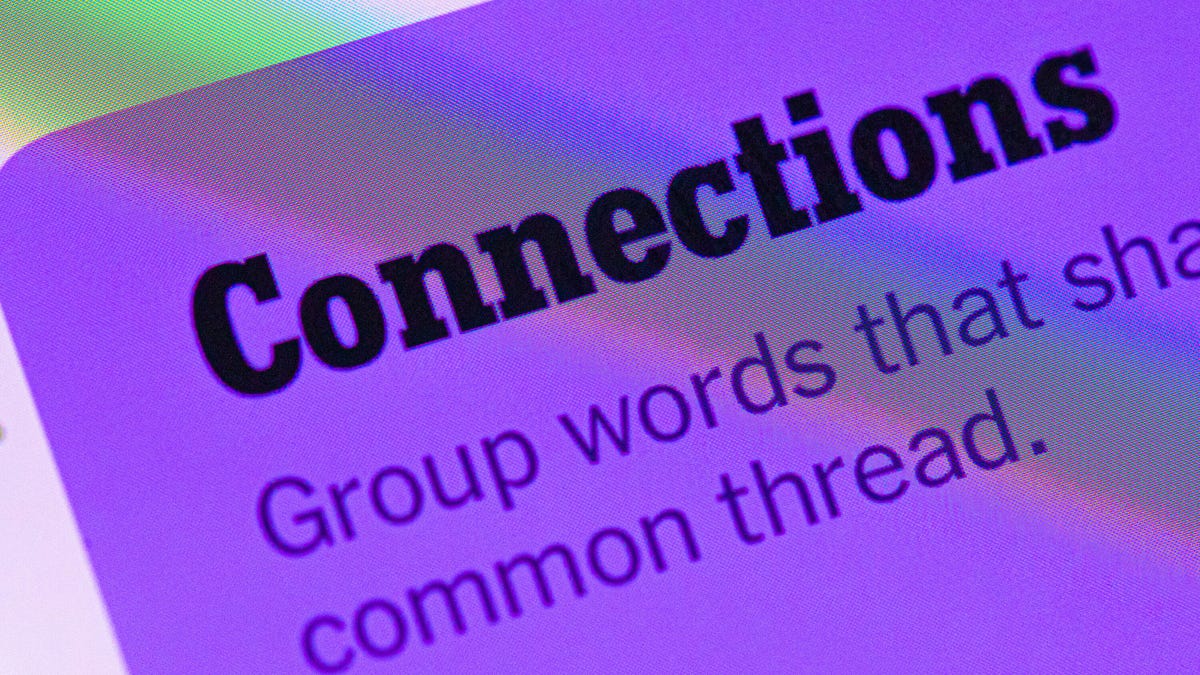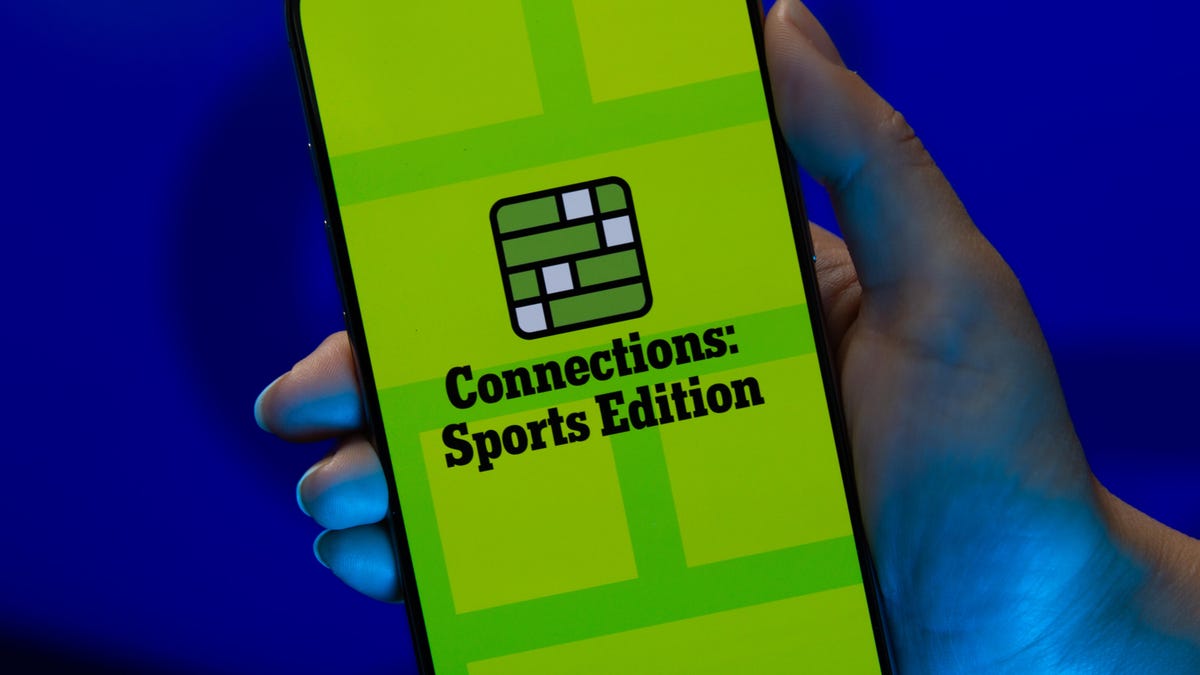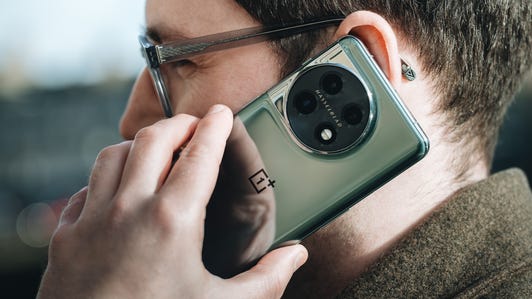Technologies
OnePlus 11 vs. Pixel 7 Pro Cameras Tested: Which Is Better?
The OnePlus 11 and Google Pixel 7 Pro have great triple cameras. We tested both devices to figure out which is the best at taking pictures.

The OnePlus 11 is a powerful Android phone with a great looking design and handy extras like hyperfast charging. But these days, a good phone also has to take superb pictures. The OnePlus 11’s triple camera array takes high-quality shots, which you can read more about in the full review for the OnePlus 11. But I also wanted to see how it stacks up against its main rival, the Google Pixel 7 Pro.
The Pixel 7 Pro earned a coveted CNET Editors’ Choice award last year because of its specs and superb camera, so I knew it was going to be a fun «shoot-out» to determine which one captures the better photos.
I charged both handsets up and headed off around beautiful Edinburgh, Scotland, to see what’s what.


OnePlus 11, main camera.
Andrew Lanxon/CNET

Pixel 7 Pro, main camera.
Andrew Lanxon/CNETThe OnePlus 11’s shot above is certainly more vibrant than the image from the Pixel 7 Pro, but it looks oversaturated, with quite a teal tone to the sky. As a result, the OnePlus image looks less natural. It’s something I found generally with the OnePlus 11 camera in testing it for my review.


OnePlus 11, ultra-wide lens.
Andrew Lanxon/CNET

Pixel 7 Pro, ultra-wide lens.
Andrew Lanxon/CNETSwitching to the ultra-wide lens, the OnePlus 11 has again produced a more vibrant shot. (See above.) It’s not that it’s a bad photo — if you want bright, punchy shots of your friends having fun, it’ll suit you well. But it’s worth keeping in mind if you prefer more natural-looking shots like the one from the Pixel.


OnePlus 11, main camera.
Andrew Lanxon/CNET

Pixel 7 Pro, main camera.
Andrew Lanxon/CNETBoth phones captured bright and well-exposed scenes in the photos above. But the HDR on the OnePlus 11 is too aggressive in lifting the shadows, resulting in quite a «processed» look. It’s again produced a blue sky that leans more into teal tones, while the Pixel 7 Pro’s shot looks more true-to-life overall.


OnePlus 11, ultra-wide lens.
Andrew Lanxon/CNET

Pixel 7 Pro, ultra-wide lens.
Andrew Lanxon/CNETTake a look above where it’s exactly the same story when we switch to the ultra-wide lens; overly lifted shadows and toned down highlights resulting in quite an HDR look to the image, to my eye.


OnePlus 11, main camera.
Andrew Lanxon/CNET

Pixel 7 Pro, main camera.
Andrew Lanxon/CNETI don’t feel the OnePlus 11 has done great in the photo above either, but mostly due to the color balance which has resulted in quite a teal-colored sky and a yellow-green tinge to the buildings on the left.


OnePlus 11, 2x zoom.
Andrew Lanxon/CNETOne of the things I found most disappointing in my OnePlus 11 review is that it lacks a proper telephoto zoom lens, instead having just a 2x zoom for portrait shots. I love a zoom lens on a phone as it allows you to find interesting compositions in your surroundings that might be lost to your friends and their wide-angle-only phone cameras. In the photo above, the OnePlus 11’s 2x lens only goes so far in getting a closer-up view of the buildings against the river.


Pixel 7 Pro, 5x optical zoom.
Andrew Lanxon/CNETWith its 5x optical zoom, the Pixel 7 Pro can get a much closer view. Check out the Pixel’s photo above. I always enjoy taking photos with the Pixel’s zoom lens as I feel I can get a lot more creative with the zoom than I can with just a wide-angle lens.
Where the OnePlus 11 excels though is in its night mode photos.


OnePlus 11, night mode.
Andrew Lanxon/CNET

Pixel 7 Pro, night mode.
Andrew Lanxon/CNETThe OnePlus 11 has achieved a brighter image above, which is especially noticeable on the main building in the center of the frame. I think the colors look better too, and there’s generally more detail to be seen throughout the image.


OnePlus 11, night mode.
Andrew Lanxon/CNET

Pixel 7 Pro, night mode.
Andrew Lanxon/CNETAnd it’s the same in the photos above. The OnePlus 11 captured a much brighter shot, with clouds in the night sky being particularly noticeable.


OnePlus 11, night mode.
Andrew Lanxon/CNET

Pixel 7 Pro, night mode.
Andrew Lanxon/CNETBoth images above suffer from significant flares when shooting toward bright light sources, but most phones tend to have this problem. It’s not really any worse on either phone, so it’s just something you’ll need to keep in mind when shooting at night.
Which is the better camera phone?
Throughout my testing, I’ve found that the OnePlus 11 quite consistently delivers shots that are highly saturated and show heavy-handed HDR processing that lifts shadows and tones down highlights to a sometimes unrealistic extent. By contrast, the Pixel 7 Pro’s images are more true to life, with accurate colors and more satisfying shadow areas that haven’t been ‘fixed’ (read: lightened) by the camera software.
However, it’s important to keep in mind that this is largely subjective. As a photographer, imaging skills are a top priority for me in a phone. I want a camera that takes more realistic photos, with more «neutral» contrast and exposure, so that I have a better image to potentially apply my own edits or effects to later on. As a result, I prefer the shots from the Pixel 7 Pro. But if photography is maybe less of a concern and you instead want vibrant, punchy images straight out of the camera that you can instantly share with family and friends, then perhaps you’ll enjoy the vivid look of the OnePlus 11’s pictures. It’s certainly got the edge when it comes to night mode too.
What’s not subjective though is the lack of a bigger zoom on the OnePlus 11. That 2x lens is fine for portraits, but it’s nothing compared with the superb 5x zoom on the Pixel 7 Pro, which is probably my favorite camera lens found on any of today’s top phones. The Pixel 7 Pro feels like I’m putting a full camera bag of equipment in my pocket; a superb ultra-wide, a great standard zoom and an excellent telephoto. With it, I know I can grab interesting compositions in almost any environment I find myself in and it’s why the OnePlus 11 doesn’t feel like a fully capable photography phone.
Technologies
Today’s NYT Connections Hints, Answers and Help for Nov. 24, #897
Today’s Connections puzzle is kind of tough. Here are hints, answers and help for Nov. 24, #897.

Looking for the most recent Connections answers? Click here for today’s Connections hints, as well as our daily answers and hints for The New York Times Mini Crossword, Wordle, Connections: Sports Edition and Strands puzzles.
Today’s NYT Connections puzzle is kind of tough. The purple category once again wants you to find hidden words inside other words. If you need help sorting the words into groups, you’re in the right place. Read on for clues and today’s Connections answers.
The Times now has a Connections Bot, like the one for Wordle. Go there after you play to receive a numeric score and to have the program analyze your answers. Players who are registered with the Times Games section can now nerd out by following their progress, including the number of puzzles completed, win rate, number of times they nabbed a perfect score and their win streak.
Read more: Hints, Tips and Strategies to Help You Win at NYT Connections Every Time
Hints for today’s Connections groups
Here are four hints for the groupings in today’s Connections puzzle, ranked from the easiest yellow group to the tough (and sometimes bizarre) purple group.
Yellow group hint: Like an air fryer.
Green group hint: In your vehicle.
Blue group hint: Take out your laptops, dump out your water.
Purple group hint: Like a rainbow.
Answers for today’s Connections groups
Yellow group: Small kitchen appliances.
Green group: Features of a car’s center console.
Blue group: Seen while going through airport security.
Purple group: Ending in colors.
Read more: Wordle Cheat Sheet: Here Are the Most Popular Letters Used in English Words
What are today’s Connections answers?
The yellow words in today’s Connections
The theme is small kitchen appliances. The four answers are blender, microwave, rice cooker and toaster.
The green words in today’s Connections
The theme is features of a car’s center console. The four answers are air conditioner, cup holder, radio and shifter.
The blue words in today’s Connections
The theme is seen while going through airport security. The four answers are bin, carry-on, metal detector and X-ray.
The purple words in today’s Connections
The theme is ending in colors. The four answers are infrared, marigold, stingray and ultraviolet.
Don’t miss any of our unbiased tech content and lab-based reviews. Add CNET as a preferred Google source.
Toughest Connections puzzles
We’ve made a note of some of the toughest Connections puzzles so far. Maybe they’ll help you see patterns in future puzzles.
#5: Included «things you can set,» such as mood, record, table and volleyball.
#4: Included «one in a dozen,» such as egg, juror, month and rose.
#3: Included «streets on screen,» such as Elm, Fear, Jump and Sesame.
#2: Included «power ___» such as nap, plant, Ranger and trip.
#1: Included «things that can run,» such as candidate, faucet, mascara and nose.
Technologies
Today’s NYT Connections: Sports Edition Hints and Answers for Nov. 24, #427
Here are hints and the answers for the NYT Connections: Sports Edition puzzle for Nov. 24, No. 427.

Looking for the most recent regular Connections answers? Click here for today’s Connections hints, as well as our daily answers and hints for The New York Times Mini Crossword, Wordle and Strands puzzles.
Music lovers, today’s Connections: Sports Edition has a fun green category for you. You’ll recognize some familiar phrases in the grid, I think. If you’re struggling with today’s puzzle but still want to solve it, read on for hints and the answers.
Connections: Sports Edition is published by The Athletic, the subscription-based sports journalism site owned by The Times. It doesn’t appear in the NYT Games app, but it does in The Athletic’s own app. Or you can play it for free online.
Read more: NYT Connections: Sports Edition Puzzle Comes Out of Beta
Hints for today’s Connections: Sports Edition groups
Here are four hints for the groupings in today’s Connections: Sports Edition puzzle, ranked from the easiest yellow group to the tough (and sometimes bizarre) purple group.
Yellow group hint: Not long pants.
Green group hint: Sing out.
Blue group hint: Gridiron guys who share a name.
Purple group hint: Like a law.
Answers for today’s Connections: Sports Edition groups
Yellow group: Types of shorts.
Green group: Popular arena/stadium songs.
Blue group: Football Drews.
Purple group: ____ rule.
Read more: Wordle Cheat Sheet: Here Are the Most Popular Letters Used in English Words
What are today’s Connections: Sports Edition answers?
The yellow words in today’s Connections
The theme is types of shorts. The four answers are basketball, bike, compression and gym.
The green words in today’s Connections
The theme is popular arena/stadium songs. The four answers are Eye of the Tiger, Jump Around, Sandstorm and Thunderstruck.
The blue words in today’s Connections
The theme is football Drews. The four answers are Bledsoe, Brees, Lock and Pearson.
The purple words in today’s Connections
The theme is ____ rule. The four answers are infield fly, mercy, tuck and unwritten.
Don’t miss any of our unbiased tech content and lab-based reviews. Add CNET as a preferred Google source.
Technologies
Today’s NYT Mini Crossword Answers for Monday, Nov. 24
Here are the answers for The New York Times Mini Crossword for Nov. 24.

Looking for the most recent Mini Crossword answer? Click here for today’s Mini Crossword hints, as well as our daily answers and hints for The New York Times Wordle, Strands, Connections and Connections: Sports Edition puzzles.
Need some help with today’s Mini Crossword? Two down might be my favorite clue, and answer, this puzzle has ever offered. Read on for all of the answers. And if you could use some hints and guidance for daily solving, check out our Mini Crossword tips.
If you’re looking for today’s Wordle, Connections, Connections: Sports Edition and Strands answers, you can visit CNET’s NYT puzzle hints page.
Read more: Tips and Tricks for Solving The New York Times Mini Crossword
Let’s get to those Mini Crossword clues and answers.
Mini across clues and answers
1A clue: Prefix for some music genres
Answer: ALT
4A clue: Fab ___ (nickname for the Beatles)
Answer: FOUR
6A clue: Eagle’s claw
Answer: TALON
8A clue: Fab ___ (nickname for a noted University of Michigan basketball team)
Answer: FIVE
9A clue: Congregant’s seat
Answer: PEW
Mini down clues and answers
1D clue: Boat’s rear
Answer: AFT
2D clue: Shape of a cat with its legs tucked under itself
Answer: LOAF
3D clue: Flower that’s the subject of Dutch festivals
Answer: TULIP
5D clue: Wander aimlessly
Answer: ROVE
7D clue: Like many shows at the top of the Netflix queue
Answer: NEW
Don’t miss any of our unbiased tech content and lab-based reviews. Add CNET as a preferred Google source.
-

 Technologies3 года ago
Technologies3 года agoTech Companies Need to Be Held Accountable for Security, Experts Say
-

 Technologies3 года ago
Technologies3 года agoBest Handheld Game Console in 2023
-

 Technologies3 года ago
Technologies3 года agoTighten Up Your VR Game With the Best Head Straps for Quest 2
-

 Technologies4 года ago
Technologies4 года agoBlack Friday 2021: The best deals on TVs, headphones, kitchenware, and more
-

 Technologies4 года ago
Technologies4 года agoVerum, Wickr and Threema: next generation secured messengers
-

 Technologies4 года ago
Technologies4 года agoGoogle to require vaccinations as Silicon Valley rethinks return-to-office policies
-

 Technologies4 года ago
Technologies4 года agoOlivia Harlan Dekker for Verum Messenger
-

 Technologies4 года ago
Technologies4 года agoiPhone 13 event: How to watch Apple’s big announcement tomorrow



